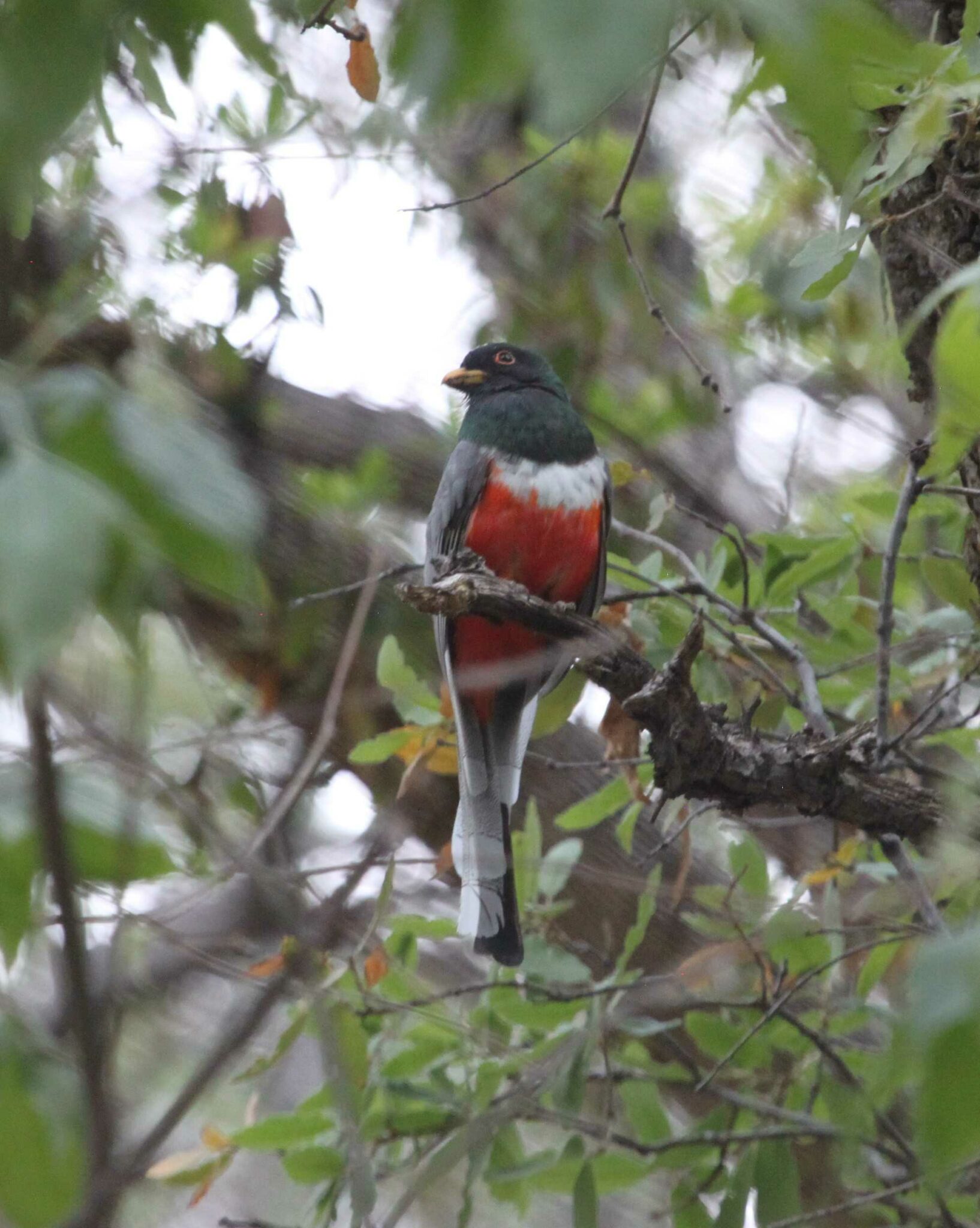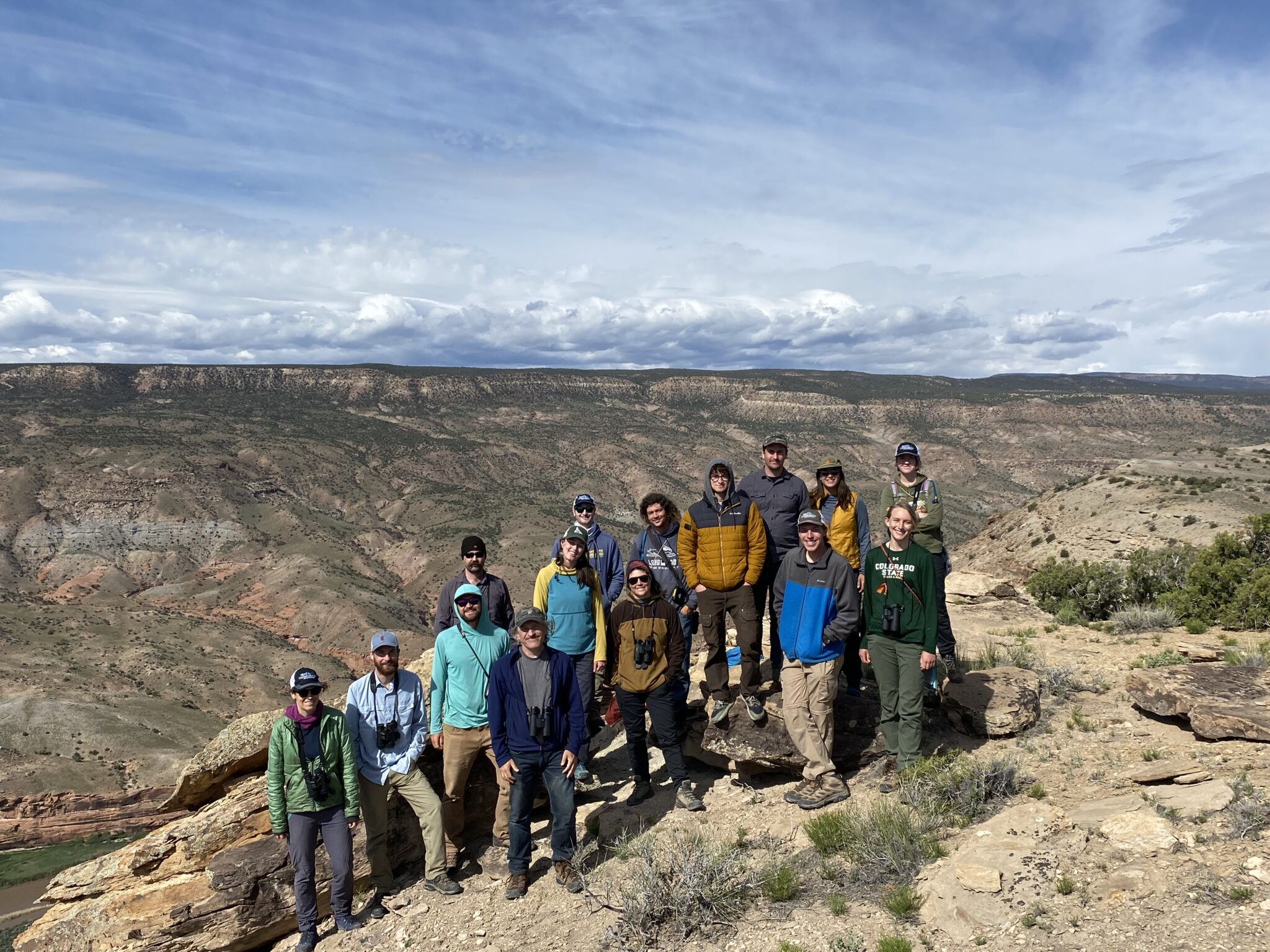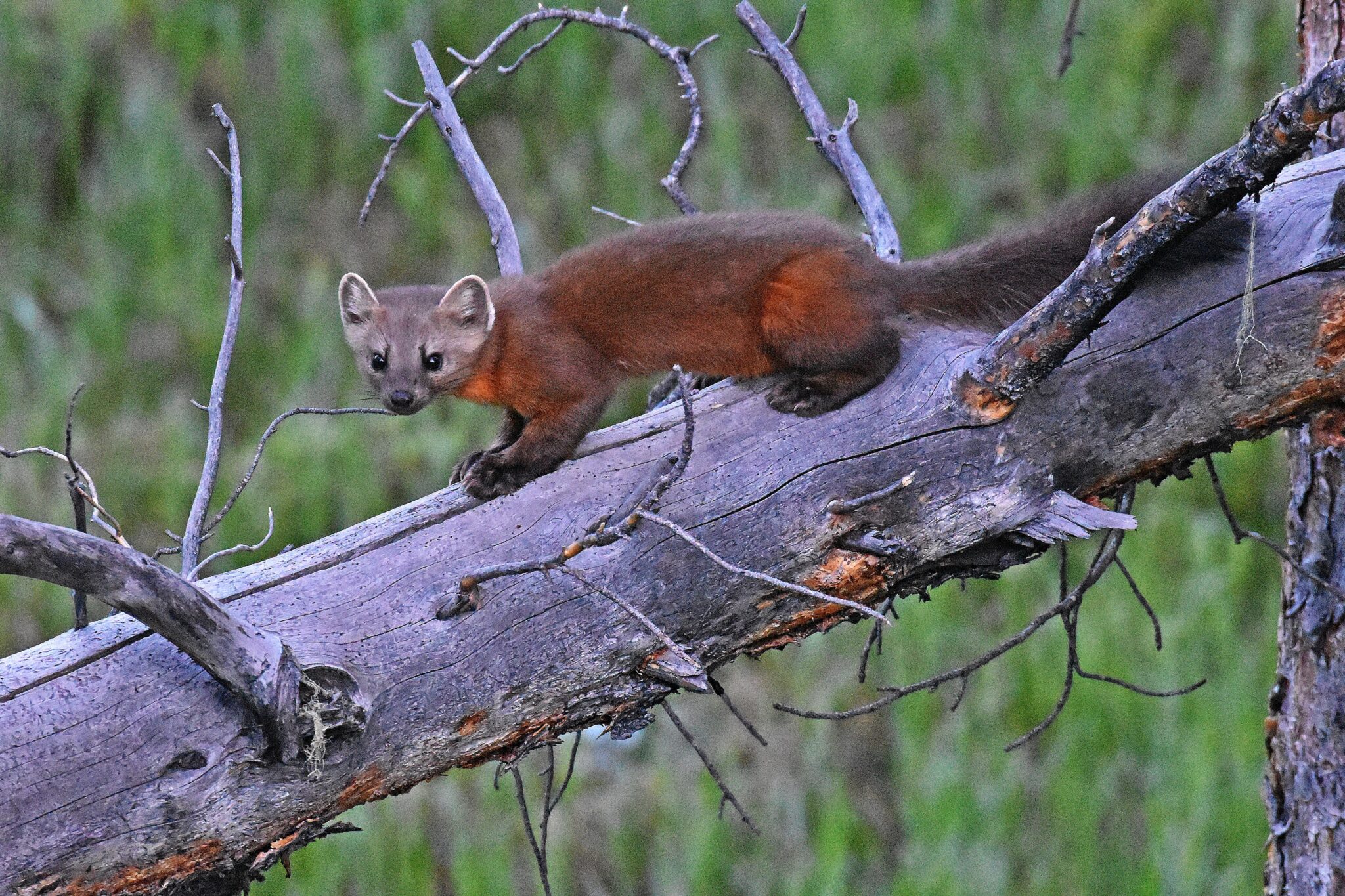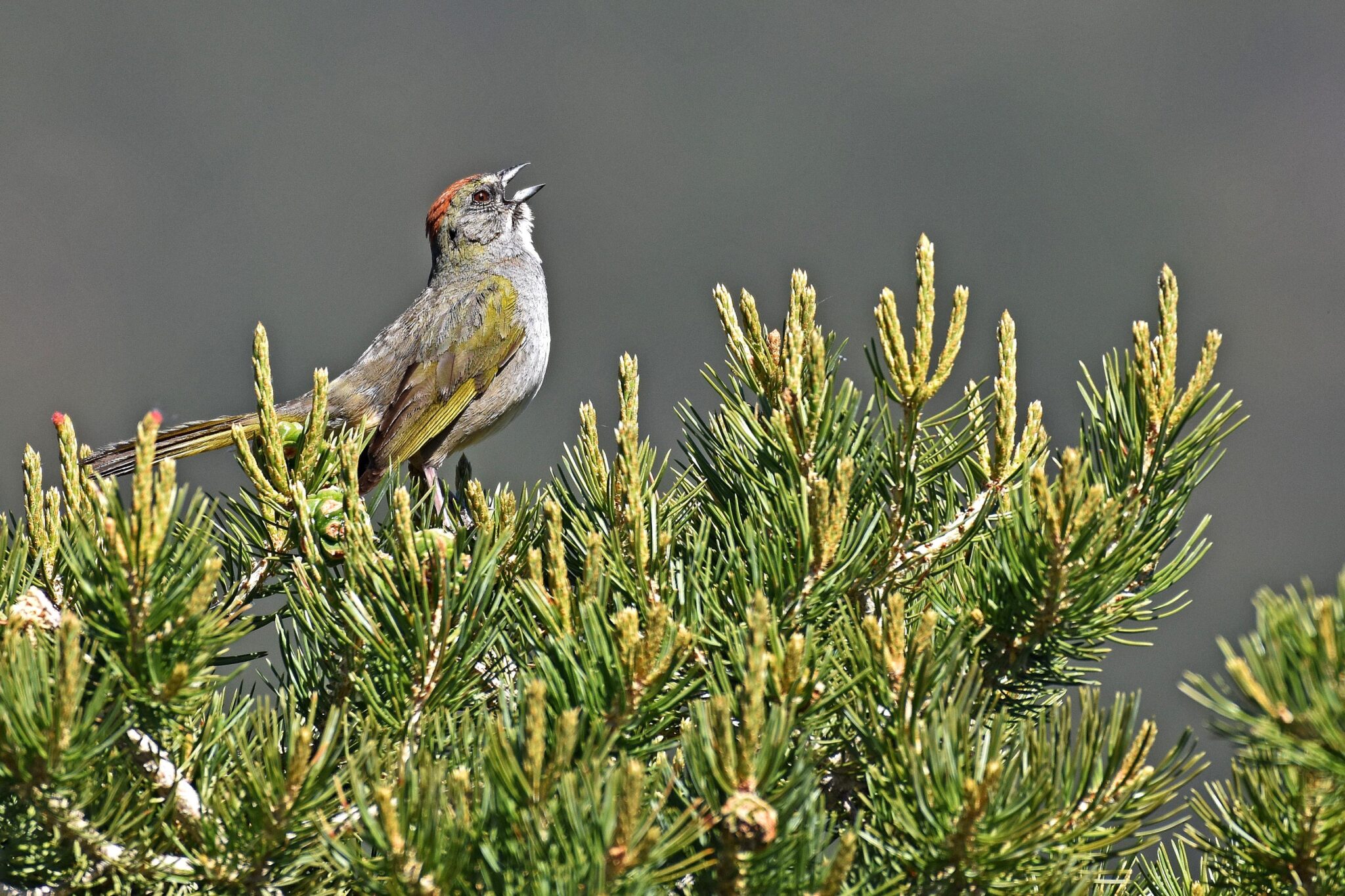As the summer slowly progresses towards fall many birds are finished nesting and feeding fledglings and are preparing for the next step in their annual cycle. Some will migrate south as far as Central and South America, while others will hunker down for winter in the same areas where they bred. Each morning the dawn chorus is a little quieter and the species list less diverse. To a technician working on the Integrated Monitoring in Bird Conservation Regions (IMBCR) program this signals that the point counts are done for the year and they too will move on to their next adventure.
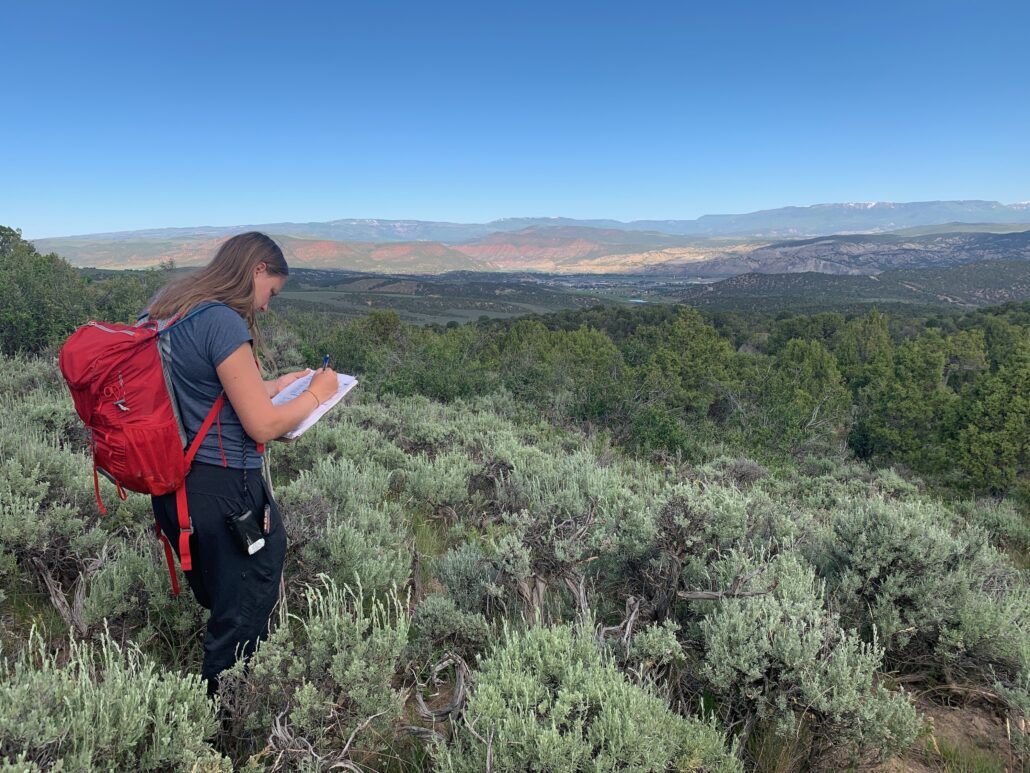
Sarah Dormer conducting an IMBCR survey – photo by Eric DeFonso
Each summer Bird Conservancy and our partners hire nearly 100 technicians who fan out across the West to conduct IMBCR surveys for breeding birds. Technicians spend 2-3 months living out of their vehicles, camping, hiking, and exploring randomly selected survey sites. Working as an IMBCR technician is not easy as alluded in our last blog post A Day in the Life of a Field Technician, but offers amazing opportunities to witness sunrises, beautiful landscapes, rare wildlife, and of course, an amazing variety of bird species. Each technician works in a specific study area, and the experience varies depending on where they work. Some work primarily in the Great Plains in grassland habitat where the hiking is easier, while others work in the Rocky Mountains and may have surveys over 11,000 feet with difficult hiking in steep rugged terrain. The birds they encounter also vary from Sprague’s Pipit in the Northern Great Plains to Elegant Trogon in the Southwest and Varied Thrush in the Northwest. IMBCR technicians are self-motivated, hardworking, adventurous, and have the ability to identify over 200 species by sight and sound. In 2023, IMBCR technicians spent tens of thousands of hours completing surveys and hiked thousands of miles to collect important data for the conservation of birds.
- Elegant Trogon in Arizona. Photo by TC Walker
- The beatiful landscapes of the west. Photo by Dave Spangenburg
This summer, technicians completed over 23,000 point counts and recorded over 300,000 individual birds. Since the start of the IMBCR program in 2008 we have recorded over 3.5 million birds of 458 species. This year the IMBCR program covers 1.94 million km2, which is equivalent to the area of Mexico, the 15th largest country in the world. The collaborative network of scientists, field biologists, land and wildlife management agencies, conservation organizations, tribes, and private landowners and communities is essential to implementing such a large and successful monitoring effort.
- The 2023 Colorado IMBCR Crew.
- Rocky peaks in White River National Forest. Photo by Max Roberts
IMBCR utilizes a statistically rigorous design based on probabilistic sampling to convert these raw numbers into metrics that are used to inform management decisions and contribute to bird and habitat conservation. The annual analysis completed each winter produces density, abundance, occupancy, and trend estimates for all breeding bird species for which we have enough detections. This information is available to anyone on the Rocky Mountain Avian Data Center. Currently we provide density and/or occupancy estimates for 330 species.
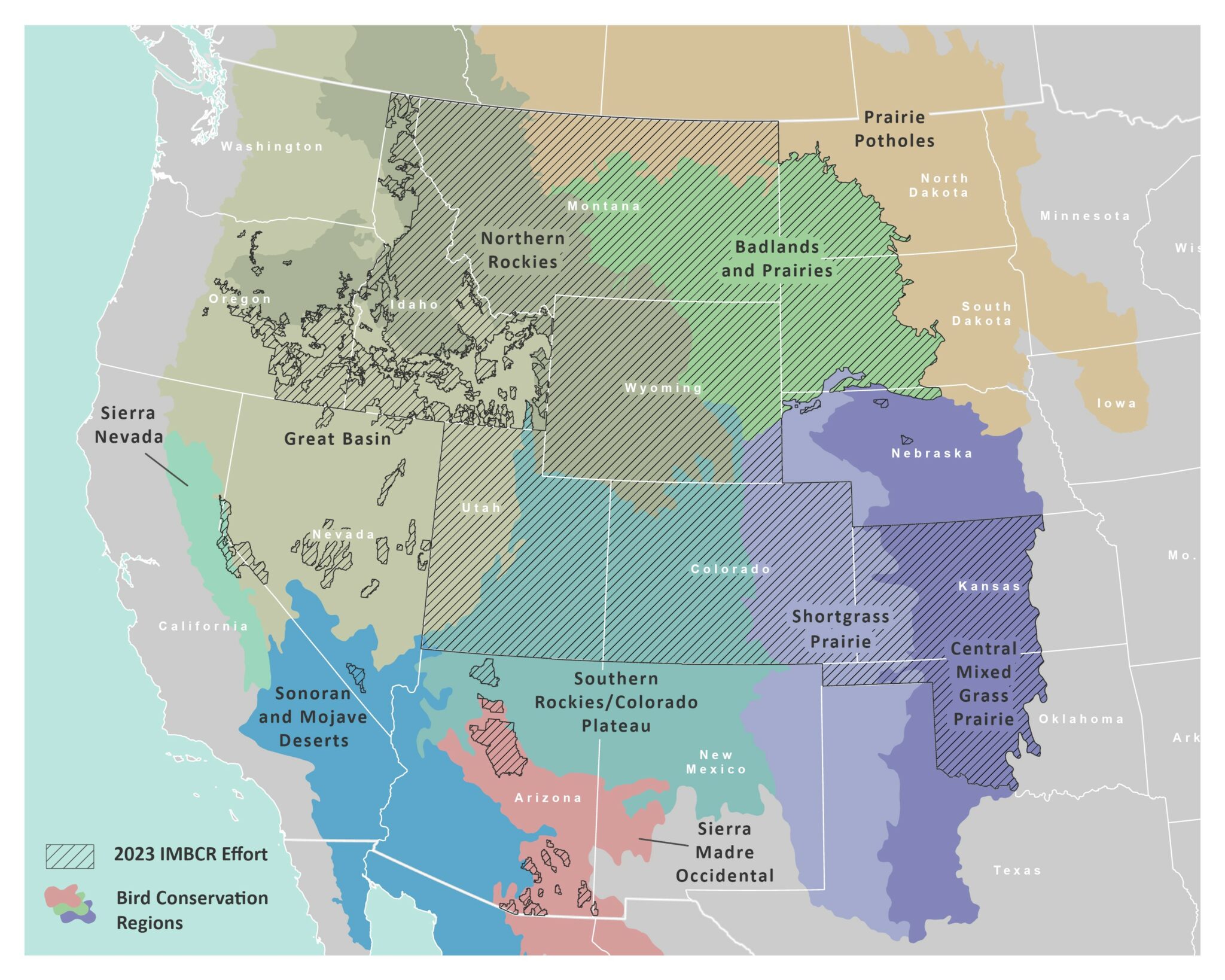
The extent of the IMBCR season
The 16th season of IMBCR breeding bird surveys is complete and we are working hard in the office to proof the data before we begin analyses. Thanks to the hard work and cooperation of IMBCR partners, landowners, and field technicians we continue to provide valuable information to help conserve birds and inform management. Before we know it, the birds will return to breeding territories and IMBCR technicians will be ready to spend the summer hiking into survey locations to help further the understanding of bird populations throughout the west.
- It is not all birds on surveys! Pine Marten on log Max Roberts
- Green-tailed Towhee singing. Photo by Max Roberts

The author Matthew received the partner of the year award for IMBCR last year!
Matthew McLaren is a Senior Avian Ecologist and IMBCR Coordinator for Bird Conservancy. Matthew is very passionate about the IMBCR program as is described in this blog post from last year. Thank you to everyone involved in the field and behind the scenes to this massive effort.


